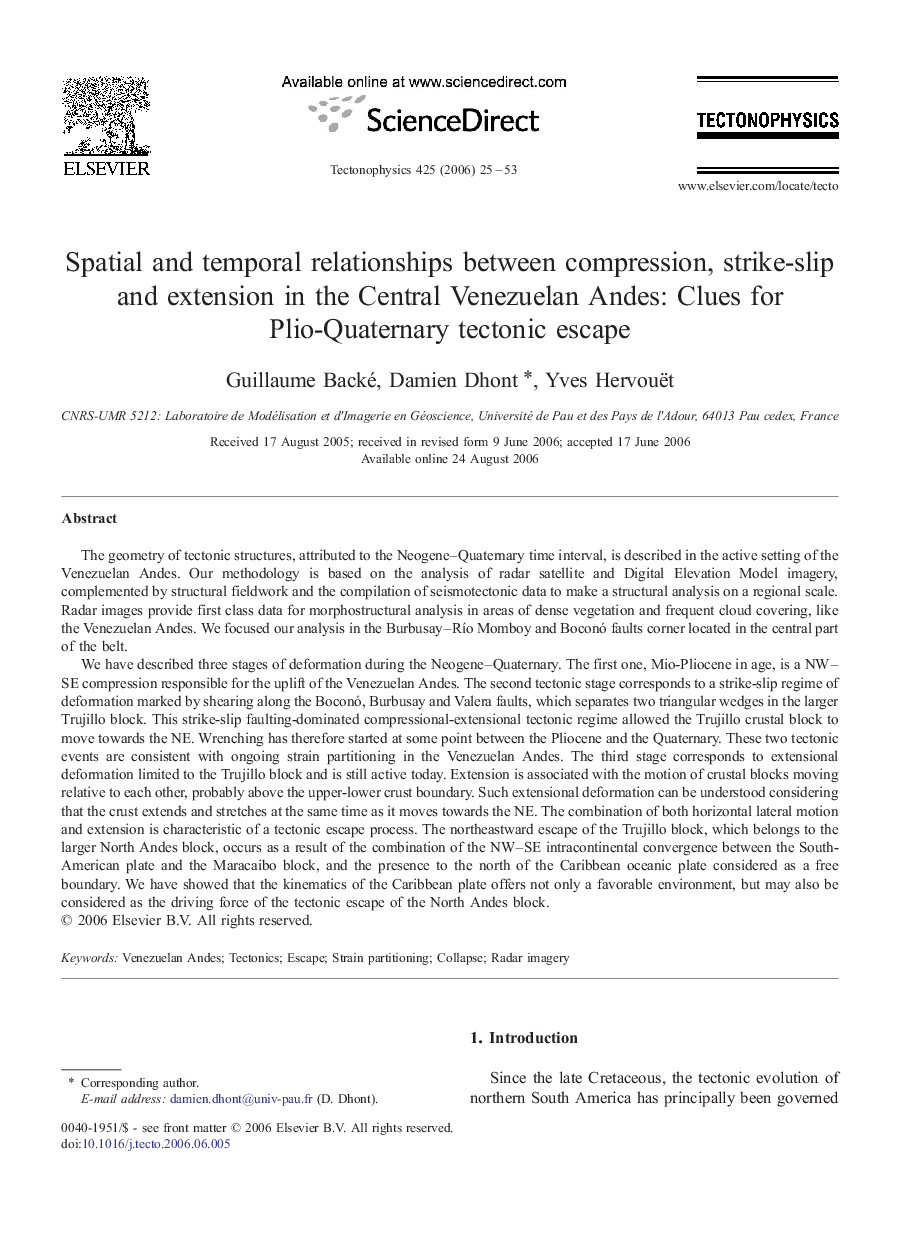| کد مقاله | کد نشریه | سال انتشار | مقاله انگلیسی | نسخه تمام متن |
|---|---|---|---|---|
| 4694963 | 1636946 | 2006 | 29 صفحه PDF | دانلود رایگان |

The geometry of tectonic structures, attributed to the Neogene–Quaternary time interval, is described in the active setting of the Venezuelan Andes. Our methodology is based on the analysis of radar satellite and Digital Elevation Model imagery, complemented by structural fieldwork and the compilation of seismotectonic data to make a structural analysis on a regional scale. Radar images provide first class data for morphostructural analysis in areas of dense vegetation and frequent cloud covering, like the Venezuelan Andes. We focused our analysis in the Burbusay–Río Momboy and Boconó faults corner located in the central part of the belt.We have described three stages of deformation during the Neogene–Quaternary. The first one, Mio-Pliocene in age, is a NW–SE compression responsible for the uplift of the Venezuelan Andes. The second tectonic stage corresponds to a strike-slip regime of deformation marked by shearing along the Boconó, Burbusay and Valera faults, which separates two triangular wedges in the larger Trujillo block. This strike-slip faulting-dominated compressional-extensional tectonic regime allowed the Trujillo crustal block to move towards the NE. Wrenching has therefore started at some point between the Pliocene and the Quaternary. These two tectonic events are consistent with ongoing strain partitioning in the Venezuelan Andes. The third stage corresponds to extensional deformation limited to the Trujillo block and is still active today. Extension is associated with the motion of crustal blocks moving relative to each other, probably above the upper-lower crust boundary. Such extensional deformation can be understood considering that the crust extends and stretches at the same time as it moves towards the NE. The combination of both horizontal lateral motion and extension is characteristic of a tectonic escape process. The northeastward escape of the Trujillo block, which belongs to the larger North Andes block, occurs as a result of the combination of the NW–SE intracontinental convergence between the South-American plate and the Maracaibo block, and the presence to the north of the Caribbean oceanic plate considered as a free boundary. We have showed that the kinematics of the Caribbean plate offers not only a favorable environment, but may also be considered as the driving force of the tectonic escape of the North Andes block.
Journal: Tectonophysics - Volume 425, Issues 1–4, 13 October 2006, Pages 25–53